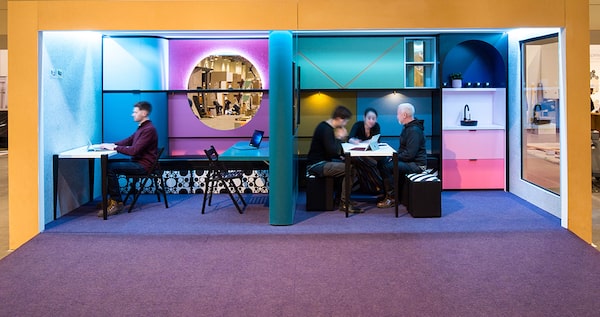
HR should be included in the strategic planning process at least two to three years in advance of an office change, says Jamie Grossman, managing partner of Cresa Toronto.Ben Tenn-Yuk
How Human Resources informs the future and culture of workspace
A change in office real estate is about more than minimizing cost or maximizing prestige. For a company in a competitive sector, it can be a crucial step to attract and retain the best talent, as well as gain employee buy-in to strategic business changes.
“Sometimes you need a catalyst event to make transformational change,” says Jamie Grossman, managing partner of the Toronto office of Cresa, an international real-estate advisory firm that exclusively represents corporate tenants.
Modifying the work environment can be such a catalyst, by altering the routine of employees, such as where they sit or how they respond to their surroundings, he says, noting that this is why the Human Resources lead is an integral part of the C-Suite’s strategic planning process.
“There’s been an evolution over the past 20 years,” says Grossman. “Real estate is a canvas HR now gets to paint.”
A big move typically becomes necessary when a growing company needs to provide dedicated space to its increasing staff. Where and when is largely dictated by financial considerations, such as the cost per square foot. In the past, the chief executive officer and the chief financial officer would prevail the decision-making, but that is not the case any longer.
Moving an office is a milestone event that may only happen every five or 10 years, says Grossman, noting that HR should be included in the C-Suite’s strategic planning process at least two or three years ahead of a planned office change. HR’s involvement in aligning with an organization’s strategic planning – even before a decision has been made about whether to move – can bring tremendous value to assessing opportunity for cultural transformation.
“We are in a war for talent in many industries,” he adds. “And real estate is an important component in a company’s ability to attract and retain people.”
He notes that workspace location and design, including desk styles, amenities such as bike lockers, lighting and wellness programs, are often key factors in a prospective employee’s decision to choose one company over another.
This is evident in how frequently employees associate an organization’s cultural shift with a change in work locations, says Grossman. “They’ll say, ‘we started our organization on King Street, then we moved to Yonge Street. They’ll talk about the King Street years and the Yonge Street years as different eras.”
Physical space doesn’t evolve fast, but workforce, technology and employee needs do, he says. “How do you future-proof a space? The speed at which technology is changing is allowing workers to change the way they work. We need to think about real estate and adapt to those changes. Cresa’s role is a hybrid: managing the real-estate life cycle from site selection, negotiation, design and construction work and administration of the lease.”
Doug Miron, a faculty member with the Centre of Excellence in Organizational Development and Change at York University, agrees that a change of space “can be a transitional event along the road to transformational change,” one that HR co-creates with other C-Suite executives.
It’s also important to include employees in the strategic decision-making, he adds, citing that he seen first-hand how a large organization’s strategic move several years ago was leveraged into happier clients and employees.
Employees were engaged in all decisions, he explains, with their work needs and observations considered through surveys, focus groups and town halls. For instance, the first-floor lobby featured lower ceilings for a calming effect and seating areas so that prospective employees could experience the ambiance and imagine what it might be like to work there. “We were designing for clients and employees of the future, not necessarily for the employees we have now,” says Miron. “You actually enter a kind of a virtuous circle. If the space is client-focused, then the clients are happy. If the clients are happy, the staff is happy.”
An organization is best able to achieve a satisfying and successful workplace culture through the intelligent alignment of people’s needs and wishes and the choice and design of work space. It’s no coincidence that companies that drive sustainable growth and attract and retain the best employees also embrace space as a key differentiator in their strategic planning.
Real estate checklist
Today's rapidly changing global workforce and the complex search for digitally savvy talent affect the following factors when choosing the ideal office location:
- A reduced amount of dedicated office space per worker with a trend toward remote workers and managers and more reliance upon shared collaborative work pods;
- Wellness considerations that give the nod to a variety of collaborative workspaces, with changing seating and lighting options;
- Increased security requirements for the remote worker, who may be accessing sensitive corporate documents at home, on their mobile phone while watching their kid’s soccer game, or working on their laptop on the GO Train;
- Cultural considerations such as a central urban location connected to transit hubs;
- Changing laws and cultural mores that have led to a growing trend toward single, non-gendered washrooms; and
- Local schools and daycares for workers with young families.
Advertising feature produced by Globe Content Studio. The Globe’s editorial department was not involved.